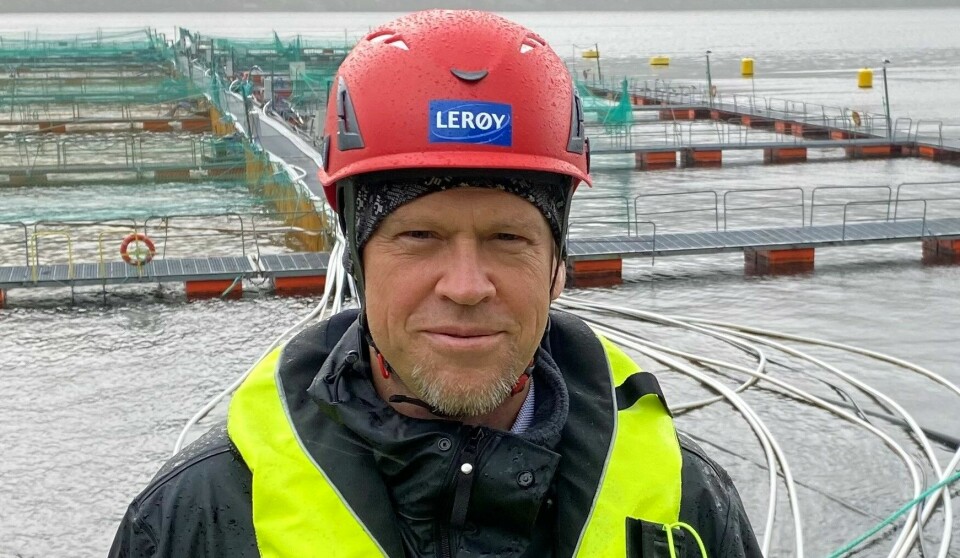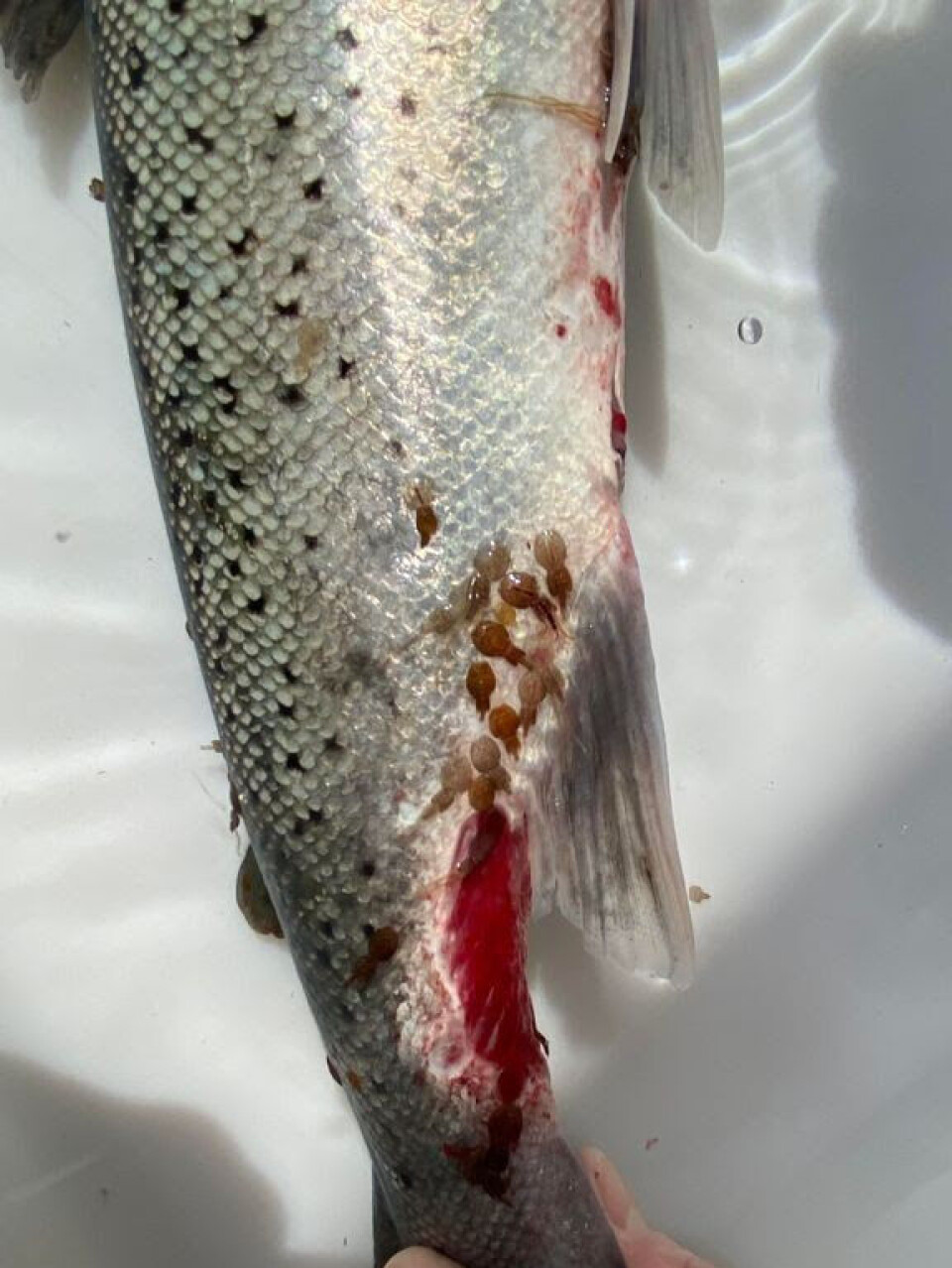
‘Lice numbers have not been this low for many years’
Salmon farming is being blamed for very large numbers of lice found on sea trout in Norway, but that doesn’t tally with what’s happening in the pens, says seafood industry organisation Sjømat Norge
Salmon farming is being wrongly blamed for a large increase in the number of sea lice found on wild sea trout in an area of Norway, according to the country’s largest aquaculture and fisheries industry organisation Seafood Norway (Sjømat Norge).
In connection with the monitoring of emigrating salmon smolts from the rivers Vosso and Dale, in early May 2023 sea trout were discovered with heavy infestations of salmon lice deep in the fjord system.
Follow-up monitoring carried out by research institute NORCE on behalf of the Norwegian Environment Agency from 15 to 24 May this year found extraordinarily high levels of lice on wild fish caught in a large net placed at Herdla at the far end of the Herdlefjord.
74 lice per fish
A total of 41 sea trout and eight salmon smolts were registered. Most of the sea trout were clearly damaged by salmon lice with grazed dorsal fins and wounds. The sea trout had an average of 74 lice per fish. The lowest number of lice observed per sea trout was 10 lice and the most was 237 lice.
“There are too many lice, and we know that the wild fish are damaged by this. We have seen a lot of lice many times before, but not so early in the year,” said NORCE researcher Espen Olsen Espedal.

He recommends that salmon farmers must coordinate the spring lice removal better, especially in relation to the smolt migration period for the waterways in Nordhordland.
“Overall, the extraordinary monitoring of salmon lice shows a high infection pressure in the fjords. This is probably a result of relatively high infection pressure from the fish farming facilities in the areas in combination with low freshwater runoff due to late snow melt,” said NORCE.
Strongest delousing ever
However, Krister Hoaas, regional manager of Seafood Norway Aquaculture West, pointed out to Fish Farming Expert’s Norwegian sister site, Kyst.no, that the lice numbers in fish farms in the relevant salmon production areas, PO3 and PO4, have not been as low as they are now for many years, if ever.
“There have never been stronger and more comprehensive coordinated measures on the part of the aquaculture companies to keep lice numbers down. In the Sognefjord, there has been extensive fallowing and very few fish in the sea,” he said.
Hoaas also pointed out that production volumes in those two areas have been reduced by 12% and 6% under Norway’s traffic light system, which cuts the number of fish that can be farmed if sea lice from fish farms are judged to be affecting wild fish.
“In summary, there are fewer fish and low lice numbers in the facilities. This indicates that the explanations for any increase in lice infestation in the fjords should also be sought elsewhere than the farming activities,” he said.
Spawning salmon
Seafood Norway says it is also clear from the 2022 report by the Norwegian Scientific Advisory Committee for Atlantic Salmon (VRL) that the total number of spawning salmon in the rivers in Western Norway has been fairly stable since the bottom year in 1996.
“In other words, there has not been a deterioration in the last 25 years. Since 2011, the spawning population has been at a higher level than before. This is also evident from VRL’s figures,” said Hoaas in conclusion.
In its report last year, VRL said that both the number of Atlantic salmon returning from the ocean to Norway for spawning, and the Atlantic salmon catches, were lower in 2021 than ever recorded before (based on a time series starting in 1980) and said the increased number of spawners was due to reduced fisheries in the sea and rivers.
“Reduced exploitation has more than compensated for the decline,” said VRL, which lists escaped farmed salmon, salmon lice and infections related to salmon farming as the greatest anthropogenic threats to Norwegian wild salmon, along with hydropower production, habitat alterations, and climate change. It also lists invasive pink salmon as a threat.






















































